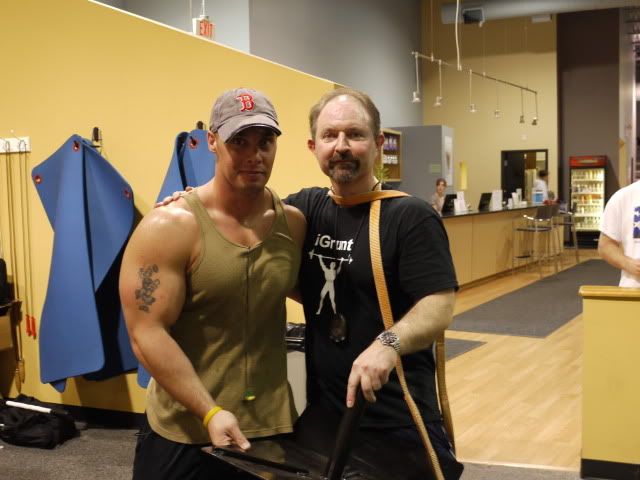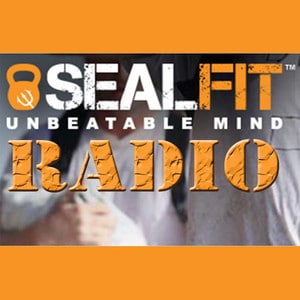I recently received a question from a Coaching Group client who asked:
“Question. I’m going to specialize in people over 50. Do you think a mini EDT PR Zone like five minutes is appropriate for older people? I know some people would just want to do one set to almost failure and that’s OK, but I do really believe that if a person wants to gain muscle mass EDT is a great way to develop muscle.
As you have written, there is no one best way to get stronger and build muscle. When I started lifting in 1955 I gained 35 pounds of weight, mostly muscle, just doing one set of about eight exercises. Alternating 8, 10 and 12 reps. This was the old Joe Weider routine. I was in college and had not seen my parents for four months and I had grown from 135 pounds to 170 pounds. When I knocked at the door my mom answered and said, ‘Is that you George?’
After that the gains were much slower and eventually by lifting very heavy (Olympic and power lifting) and stuffing myself I gained to 255 pounds of muscle and a lot of fat. I was strong but not fit at all. Now I’m 178 pounds at 6′ and strong for my age (70) and size and very fit. I’m wearing the same size pants I did in 1957 when I was in the army. I still want to gain more muscle on my legs.”
In my response to this question, I pointed out that the amount of total work you do determines fitness gain, not how difficult or how easy (or how painful) that work happens to feel. In seminars, I often ask, “Do you burn more calories walking a mile, or running a mile?”
The answer is, it’s the same – the amount of work you do (in this case, one mile) that determines the energy expenditure, not the level of effort. Now it’s true that running the mile burns more calories per unit of time, but then again, you finish faster, so it’s a wash.
That being the case, I’m concerned about how much work is accomplished during each training session.
You can perform more work if you manage pain/fatigue by breaking the workload into several manageable chunks, rather than trying to accomplish it all in one all-out sprint. This is why I argue for many sets of low reps, as opposed to the reverse. It’s also why I advocate accelerative performances with moderate weights as opposed to grinding efforts with close to maximal weights (for whatever reps are being used). These tactics favor performance over pain, which results in a higher work output with less pain and discomfort.
Way back when the Soviet Ministry of Sport was still in business, the training of Olympic weightlifters was managed by tracking and manipulating total workloads over 50% of 1RM. Daily workouts were measured by total reps for each exercise, and longer-term cycles were organized and monitored according to tonnage.
I’m not as familiar with how the Soviets managed athletes in other sports, but I strongly suspect that the training of rowers was planned based on total yardage (or kilometers for longer-duration athletes). The principle is universal and infinitely scaleable: production = profit. If I’m a writer, a successful day is defined as one where I end up with more pages at the end of the day than at the beginning of that day. Sure – producing those pages might have been fatiguing or even painful, but pain isn’t the goal, it’s the (usually unavoidable) consequence of performing work.
Operating from an “exerciser” mentality is inefficient because it leads one to prioritize pain over performance.
In this paradigm, pain becomes the goal, rather than the consequence of performing work. Think about the practice of performing forced reps. You manage to get 8 reps on your own, and then, just when you’re on the brink of failure, your training partner helps you squeeze out 3 more. On those last 3 reps – the ones that really hurt – are you doing more work, or less? The answer is less – “X” amount of work requires “X” amount of energy. When you do forced reps, your partner simply contributes his energy when yours has been depleted.
In other words, the work is now shared between two people as opposed to one. More pain, less gain.
Call me crazy, but I’d rather have less pain and more gain. But that’s just me. By the way, if you only have one set to get the job done, I’d recommend taking it to momentary muscular failure. That said, why is everyone so focused on what happens during a single set? Why do people always operate from the assumption that you only have one set to get the job done? Anyone who’s ever run a marathon can tell you that it’s what happens over the course of 26.2 miles that matters, not what happens between miles 12 and 14.
Understanding this truth is what separates athletes from exercisers. Your practices spring from your paradigms. Your view of the World determines how you operate in the World. Think about that the next time you see your local gym gorilla on the leg press loaded with every 45 in sight (plus his training partner sitting on top) doing ¼ reps with his knees wrapped with 20-ply titanium powerlifting wraps.








is it ok for a guy thats 58yrs young to over work. i’m running three 10,9,8, minute miles in about 25minutes then i do my about a hr. of free weights and some machines four days a week. got a few 20 and 30yr olds that i’m working with they really push me hard. my bench is about 315-325, should i start to come down in weight we go hard with the rest of the bodyparts too. but i’m the only one who runs three miles before the workout and still can hang with these young guys. i’m about 205lbs.
Nice work George! generally I recommend that strength work should be performed prior to any endurance work that you might do- something you might experiment with, but otherwise, it looks like you’re having some great success!
hey charles, thanks for responing so soon. two things i want to ask you. one, as i said before i think my workout is pretty intense, but how the heck, do i get past the mental block obout eating right. man i still think because i workout like i do that i’m ok. the fact is that i look really good everywhere but my mid-section. two, should i do shoulder after do ten set of 10 sets of pullups @ 10-12 reps. 10 set of dips, and 10 sets of pushups @ 25 per rep. one behind the other. i told you i go hard. ps. been to doctor to check heart, he saids i have a heart of a athete.
need to know what supplement for strenght and indurance can i use for my age (58) that will work for someone who has BPH or a little liver disorder. i tried creatine, no-explode and others, but label says do not use if BPH or liver problems exits. any way to get around it. i feel fine even with problems. no problem after hard work-out. been taking natural supplement for BPH for years.
Charles,
Over the passed six months or so I have been following static contraction training and some power factor training. That would put me, to some degree, as the “gym gorilla” you mention. I have definitely gotten stronger (in the max contraction range at least) and look and feel ok. Can you explain why and how your methods are better? I’m 60 this year but still willing to listen to any and all training theories.
Thank you
Hi Brian
It’s not the method I have issue with per se, it’s the mindset behind it. There is a place for partials in training, and they can have some degree of effectiveness. However, specificity prevails- your increased strength in reduced ROM will not typically transfer to full ROM variants of the same movement.
George, as to your second question, I don’t have the required medical expertise to authoritatively answer your question- sorry.